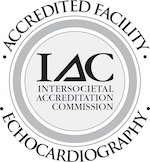Salt, Blood Pressure, and Your Heart Health
Salt is one of the most common additions to food to add some extra flavor. Although our beloved salt may feel like a staple in every meal, you might want to think twice before reaching for the shaker. Salt is known for increasing your blood pressure and causing bigger problems down the road. This doesn’t mean you have to live a salt-free life, but, like most things, moderation is key.
Effects of Salt
Salt, or sodium, makes your body hold water in order to flush out the excess. The increased water in your body makes the heart work harder, thus leading to higher blood pressure. If high blood pressure is not managed and treated, it could lead to an increased risk of heart attack, stroke, or heart failure. If you are experiencing fluid retention, you may notice swelling in your extremities, for which you should seek medical attention.
According to the American Heart Association, a person should not exceed 2,300mg in their daily sodium intake (a lower amount for those that have preexisting hypertension). To visualize that number, it is only about a teaspoon of salt. When you put it into that perspective, you can see why it is so easy to overuse. Most doctors will suggest you minimalize salt intake for these reasons.
What to Avoid
So, what foods are high in salt? The list is long: cured or preserved meats/fish, salted snacks, frozen or canned meals, pickled veggies, canned veggies, condiments such as soy sauce, salad dressings, etc. You might be able to see a trend between these foods… they are usually pre-prepared and processed. Salt is often added as a preservative to ensure longer shelf life as well. The biggest culprit, however, is eating out. Both fast food and regular restaurants use tons of salt to flavor their foods and make them more palatable to diners. Make sure you understand the nutritional value of the food you’re eating when you eat out.
What to Look For
There are tips and tricks you can use to reduce your sodium consumption. The easiest way is to monitor how much sodium is in the food you are eating. This can be done by reading the nutrition facts on the packages that you want to buy. You can also avoid pre-packaged food by buying fresh produce and whole foods without additives. You can use low-sodium ingredients to make your own food, skip that can of soup (usually very high in sodium) and cook some delicious homemade soup with healthy ingredients.
The Bottom Line
The average person eats way more salt than the human body needs. Think twice before buying those salty, processed foods and even adding table salt to flavor your food. Look into adding spices or herbs that don’t contain sodium. But pack a flavor punch. Too much sodium in your diet leads to high blood pressure and can eventually increase your risk of heart problems or cardiovascular disease.
If you are interested in discussing your sodium intake and how you can improve it, schedule an appointment with one of our heart specialists.








